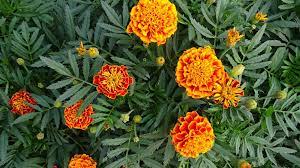What to do in your yard during hot days of August
We are in the heat of the summer with daily temperatures topping 100 degrees and no sign of rain in sight according to our weather forecast.
We need to try to keep our outdoor plants alive, so remember to work in the yard early in the morning, take breaks as needed, stay hydrated, wear a hat, use sunscreen and then stay out of the heat the rest of the day.
Early mornings, I walk around the yard and hand water the plants in pots as well as any newly planted cultivars to encourage them to tolerate the hot temperatures and the wind that will inevitably replace the calm, cool mornings. For help with the landscape, I rely on the monthly tasks from "Lone Star Gardening" by Neil Sperry and "Texas Garden Almanac" by Doug Welsh to help me keep the lawn and flower beds in good shape in the difficult August weather.
Planting tasks

Plant warm season lawn grasses such as St. Augustine, Bermuda, zoysia and buffalograss early in the month so they have time to get established before winter. Water every morning and evening for the first two to three weeks.
Transplant annuals such as marigolds, celosia, and zinnias from 4-inch pots as well as copper plants, purple fountain grass, and firebush. These plants will provide color in the fall.
Plant fall-blooming perennials such as chrysanthemums, fall asters, Mexican bush sage, and Mexican mint marigold.
Plant fall-flowering bulbs such as spider lilies and oxblood lilies.
Sow wildflower seeds into gently tilled soil. Plant in full sun where grass will not compete next spring.
Plant fall vegetables such as cucumbers, squash, and corn early in the month; broccoli, cabbage, cauliflower, and Brussels sprouts in mid-month; and leafy root vegetables such as lettuce, spinach, carrots, beets, and radishes late in the month. Water every other day for two to three hours using a drip irrigation system, which is the best way to water vegetable gardens.
Pruning tasks
Cut back annuals such as coleus, impatiens, begonias, and geraniums to encourage new growth.
Remove dead and dying flower heads and seed stalks from perennials. Prune autumn sage by one-third for new fall growth and flowers.
Remove old blooms from crape myrtles to encourage flowering through the fall season.
Prune rose bushes by one-third to encourage growth and fall blooms.
Mow grass often and at the recommended height.
What to feed
Feed lawn and landscape plants.
Feed container plants weekly using a diluted, water-soluble, high nitrogen food.
Troubleshooting
Check for aphids. These are small, pear-shaped pests that secrete a sticky honeydew on leaves of plants. Black sooty mold develops in the honeydew so take action to control the aphids to eliminate the honeydew and mold.
Check for chinch bugs and gray leaf spot in St. Augustine grass. If found, treat turf immediately.
Do not water during the middle of the day. Water the lawn using an automated irrigation system between 2 am and 6 am when the water pressure is high and evaporation levels are low. If you do not have an automated system, water before 9 am or after 8:00 or 9:00 pm.
Water fruit trees to maintain healthy foliage because next year’s crop depends on the energy produced and stored in the leaves this year.
Mulch flower and shrub beds, vegetable gardens, and trees. Mulch preserves water in the soil, reduces soil temperatures, and lessens weeds.
Miscellaneous tips
Make a note of what is blooming this month because only the toughest plants are still flowering.
Look at your yard this month to determine what is working well as well as what is not surviving or not doing well. Drive around town and make a note about what looks good in other yards. These are the plants you might want to add to your landscape.
Be sure to have fresh, cool water plus food available for the butterflies and birds.
The past couple of months, I mentioned some advice from Neil Sperry about gardening in hot weather, and I’m repeating it since hot weather is still here.
Water deeply, less often
Hand-water new trees, shrubs
Pay special attention to needs of potted plants
Eliminate water-grabbing weeds
Mulch beds
Be on the lookout for insects that attack stressed plants
Frtilize to perk up plantings.”
BCMGA will offer several free education programs in August. There will be a program on Texas Superstars at p.m. Tuesday at the Abilene Public Library branch in the Mall of Abilene and the same program at 10 a.m. Aug. 11 at the downtown library. We will have the BCMGA Saturday Seminar from 9 a.m.-noon Aug. 26 in the Taylor County Extension Office conference room.
If you have any questions, call the Taylor County Extension Office at 325-672-6048 or email us at mgardeners@yahoo.com. We hope you will like us on Facebook and visit bcmgtx.org for all Big Country Master Gardener information and events.
This article originally appeared on Abilene Reporter-News: What to do in your yard during hot days of August
